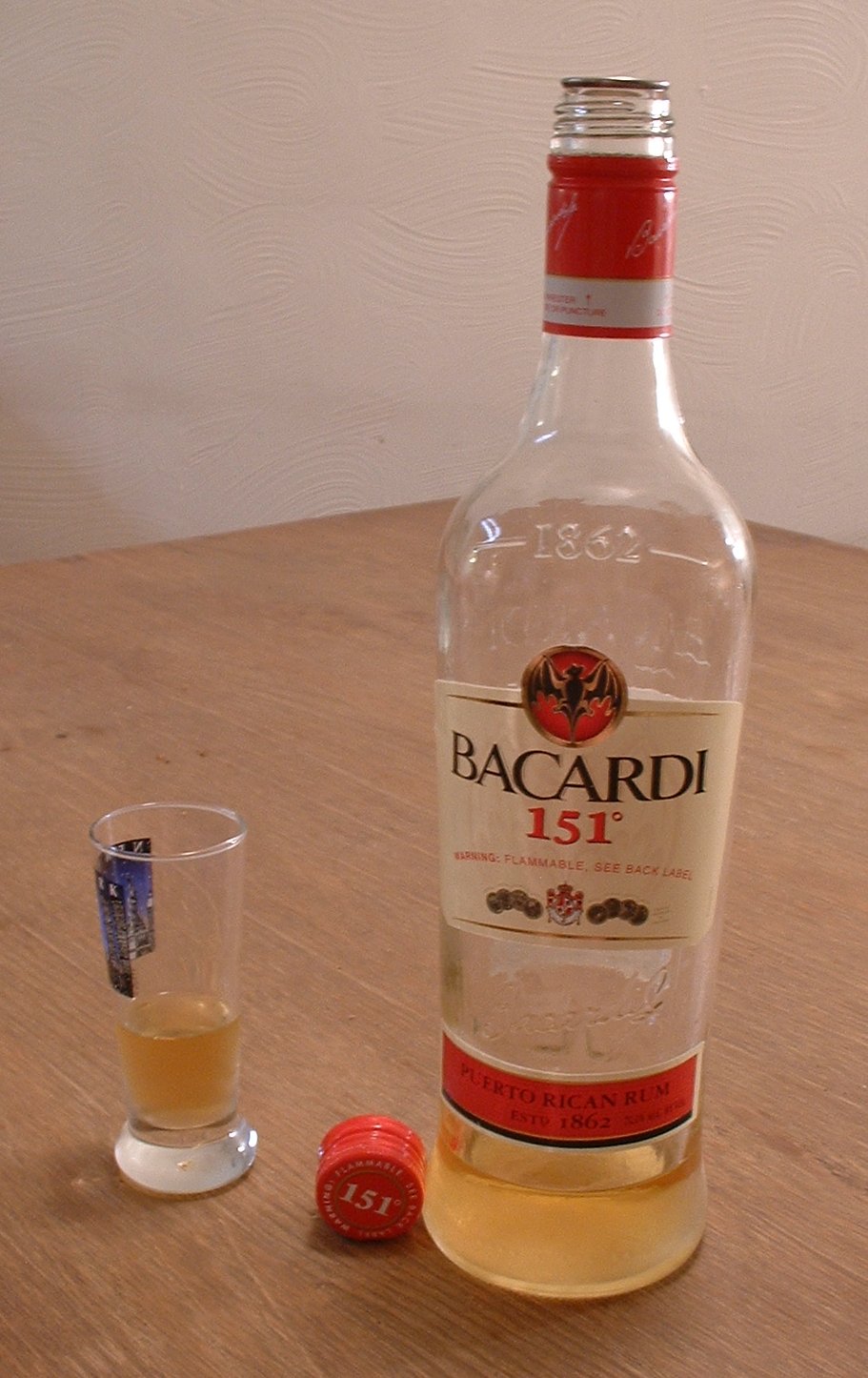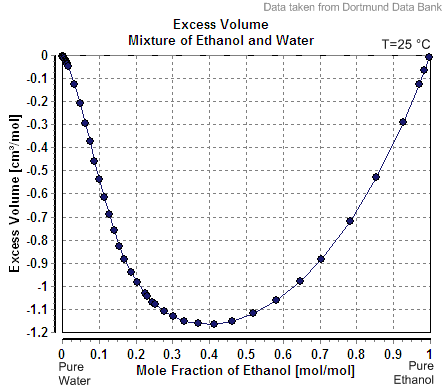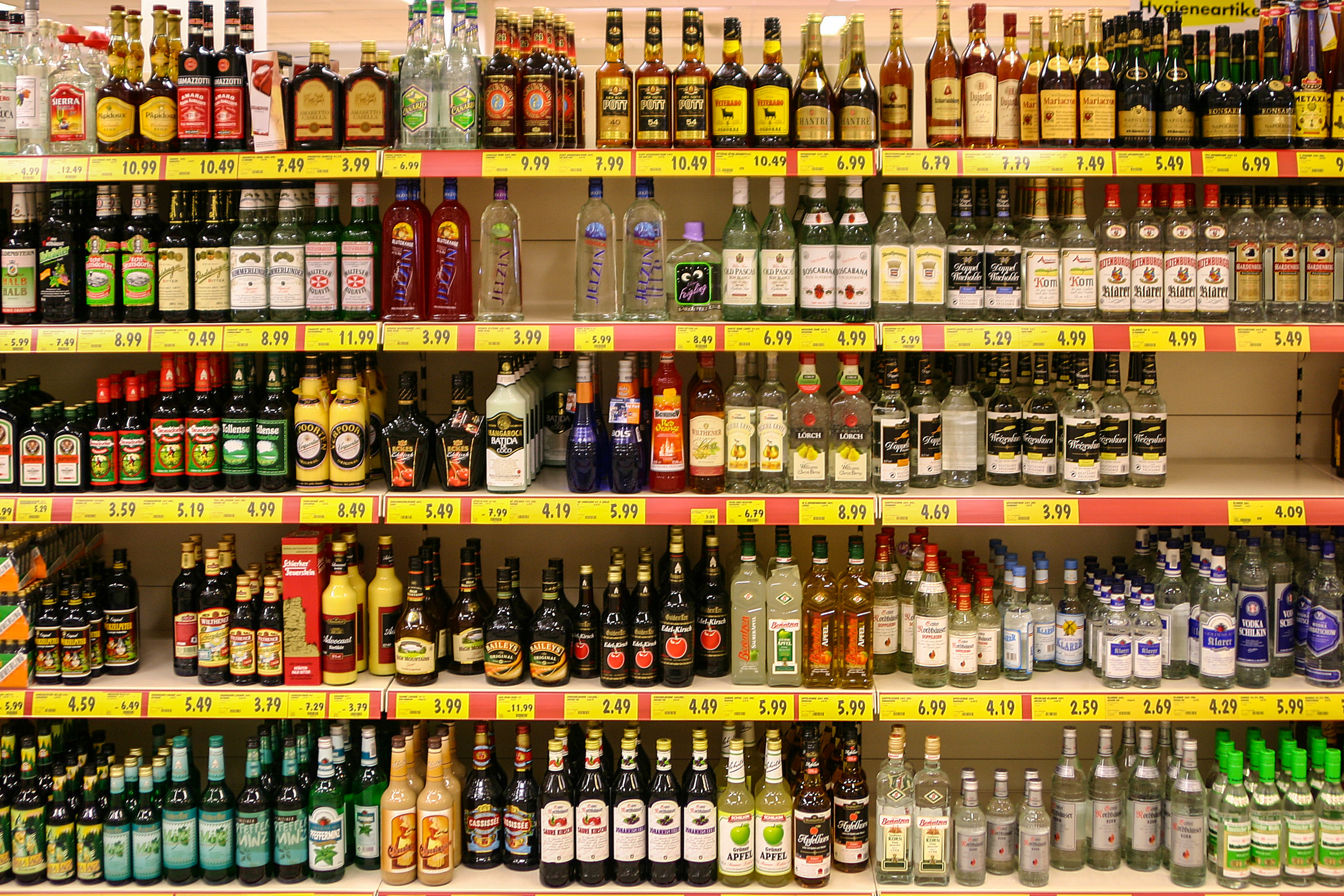|
Proof (alcohol)
Alcohol proof (usually termed simply "proof" in relation to a beverage) is a measure of the content of ethanol (alcohol) in an alcoholic beverage. The term was originally used in England and was equal to about 1.8 times the percentage of alcohol by volume (ABV). The UK now uses ABV instead of proof. In the United States, alcohol proof is defined as twice the percentage of ABV. The definition of proof in terms of ABV varies from country to country. The measurement of alcohol content and the statement of content on bottles of alcoholic beverages is regulated by law in many countries. In 1972, Canada phased out the use of "proof"; in 1973, the European Union followed suit; and the UK, where the concept originated, started using ABV instead in 1980. The US code mandates the use of ABV, but permits proof to be used also. The degree symbol (°) is sometimes used to indicate alcohol proof. History The term ''proof'' dates back to 16th century England, when Spirits (alcohol), spirits w ... [...More Info...] [...Related Items...] OR: [Wikipedia] [Google] [Baidu] |
Bacardi 151 Bottle
Bacardi Limited (; ) is one of the largest privately held, family-owned Distilled beverage, spirits companies in the world. Originally known for its Bacardi brand of white rum, it now has a portfolio of more than 200 brands and labels. Founded in Cuba in 1862 and family-owned for seven generations, Bacardi Limited employs more than 8,000 people with sales in approximately 170 countries. Bacardi Limited is the group of companies as a whole and includes Bacardi International Limited. Bacardi Limited is headquartered in Hamilton, Bermuda, and has a board of directors led by the original founder's great-great grandson, Facundo L. Bacardí, the chairman of the board. History Early history Facundo Bacardi, Facundo Bacardí Massó, a Spanish wine merchant, was born in Sitges, Catalonia, Spain, on October 16, 1814, and emigrated to Santiago de Cuba, Santiago, Cuba, in 1830. At the time, rum was cheaply made and not considered a refined drink, and rarely sold in upmarket taverns or pu ... [...More Info...] [...Related Items...] OR: [Wikipedia] [Google] [Baidu] |
Liquor
Liquor (or a spirit) is an alcoholic drink produced by distillation of grains, fruits, vegetables, or sugar, that have already gone through alcoholic fermentation. Other terms for liquor include: spirit drink, distilled beverage or hard liquor. The distillation process concentrates the liquid to increase its alcohol by volume. As liquors contain significantly more alcohol (ethanol) than other alcoholic drinks, they are considered 'harder'; in North America, the term ''hard liquor'' is sometimes used to distinguish distilled alcoholic drinks from non-distilled ones, whereas the term ''spirits'' is more common in the UK. Some examples of liquors include vodka, rum, gin, and tequila. Liquors are often aged in barrels, such as for the production of brandy and whiskey, or are infused with flavorings to form a flavored liquor such as absinthe. While the word ''liquor'' ordinarily refers to distilled alcoholic spirits rather than beverages produced by fermentation alone, i ... [...More Info...] [...Related Items...] OR: [Wikipedia] [Google] [Baidu] |
Volume Percent
In chemistry and fluid mechanics, the volume fraction φ''i'' is defined as the volume of a constituent ''V''''i'' divided by the volume of all constituents of the mixture ''V'' prior to mixing: :\phi_i = \frac Being dimensionless quantity, dimensionless, its unit is 1; it is expressed as a number, e.g., 0.18. It is the same concept as volume percent (vol%) except that the latter is expressed with a denominator of 100, e.g., 18%. The volume fraction coincides with the volume concentration in ideal solutions where the volumes of the constituents are additive (the volume of the solution is equal to the sum of the volumes of its ingredients). The sum of all volume fractions of a mixture is equal to 1: :\sum_^ V_i = V ; \qquad \sum_^ \phi_i = 1 The volume fraction (percentage by volume, vol%) is one way of expressing the composition of a mixture with a dimensionless quantity; mass fraction (chemistry), mass fraction (percentage by weight, wt%) and mole fraction (percentage by mol ... [...More Info...] [...Related Items...] OR: [Wikipedia] [Google] [Baidu] |
Cask Strength
Cask strength (also known as barrel proof/barrel strength) is a term used by whiskey (often spelled "whisky" outside of Ireland and the United States) and rum producers to describe a whiskey or rum that has not been substantially diluted after its storage in a cask for maturation. The level of alcohol-by-volume (ABV) strength for a cask strength whiskey or rum is typically in the range of 52–66% ABV. Most bottled whiskey and rum is diluted with water to reduce its strength (i.e., ABV level) to a level that makes it less expensive to produce and more palatable to most consumers – usually about 40% ABV, which is the statutory minimum in some countries, including the United States. The degree of dilution significantly affects the flavor and general drinking experience of the whiskey or rum. Production Cask strength is not the highest proof for a whiskey. Still-strength whiskey is typically a higher proof. Whiskey produced by a pot still increases in strength with each distilla ... [...More Info...] [...Related Items...] OR: [Wikipedia] [Google] [Baidu] |
Liquor
Liquor (or a spirit) is an alcoholic drink produced by distillation of grains, fruits, vegetables, or sugar, that have already gone through alcoholic fermentation. Other terms for liquor include: spirit drink, distilled beverage or hard liquor. The distillation process concentrates the liquid to increase its alcohol by volume. As liquors contain significantly more alcohol (ethanol) than other alcoholic drinks, they are considered 'harder'; in North America, the term ''hard liquor'' is sometimes used to distinguish distilled alcoholic drinks from non-distilled ones, whereas the term ''spirits'' is more common in the UK. Some examples of liquors include vodka, rum, gin, and tequila. Liquors are often aged in barrels, such as for the production of brandy and whiskey, or are infused with flavorings to form a flavored liquor such as absinthe. While the word ''liquor'' ordinarily refers to distilled alcoholic spirits rather than beverages produced by fermentation alone, i ... [...More Info...] [...Related Items...] OR: [Wikipedia] [Google] [Baidu] |
Code Of Federal Regulations
In the law of the United States, the ''Code of Federal Regulations'' (''CFR'') is the codification of the general and permanent regulations promulgated by the executive departments and agencies of the federal government of the United States. The CFR is divided into 50 titles that represent broad areas subject to federal regulation. The CFR annual edition is published as a special issue of the '' Federal Register'' by the Office of the Federal Register (part of the National Archives and Records Administration) and the Government Publishing Office. In addition to this annual edition, the CFR is published online on the Electronic CFR (eCFR) website, which is updated daily. Background Congress frequently delegates authority to an executive branch agency to issue regulations to govern some sphere. These statutes are called "enabling legislation." Enabling legislation typically has two parts: a substantive scope (typically using language such as "The Secretary shall promulgate ... [...More Info...] [...Related Items...] OR: [Wikipedia] [Google] [Baidu] |
Bottled In Bond
Bottled in bond is a label for an American-made distilled beverage that has been aged and bottled according to a set of legal regulations contained in the United States government's Standards of Identity for Distilled Spirits, as originally laid out in the Bottled-in-Bond Act of 1897. As a reaction to widespread adulteration in American whiskey, the act made the federal government the guarantor of a spirit's authenticity, gave producers a tax incentive for participating, and helped ensure proper accounting and the eventual collection of the tax that was due. Although the regulations apply to all spirits, most bonded spirits are whiskeys in practice. To be labeled as bottled-in-bond or bonded, the liquor must be the product of one distillation season (January–June or July–December) by one distiller at one distillery. It must have been aged in a federally bonded warehouse under U.S. government supervision for at least four years and bottled at 100 (U.S.) proof (50% alcohol by v ... [...More Info...] [...Related Items...] OR: [Wikipedia] [Google] [Baidu] |
Hydrometer
A hydrometer or lactometer is an instrument used for measuring density or relative density of liquids based on the concept of buoyancy. They are typically calibrated and graduated with one or more scales such as specific gravity. A hydrometer usually consists of a sealed hollow glass tube with a wider bottom portion for buoyancy, a ballast such as lead or mercury for stability, and a narrow stem with graduations for measuring. The liquid to test is poured into a tall container, often a graduated cylinder, and the hydrometer is gently lowered into the liquid until it floats freely. The point at which the surface of the liquid touches the stem of the hydrometer correlates to relative density. Hydrometers can contain any number of scales along the stem corresponding to properties correlating to the density. Hydrometers are calibrated for different uses, such as a lactometer for measuring the density (creaminess) of milk, a saccharometer for measuring the density of sugar in a liqu ... [...More Info...] [...Related Items...] OR: [Wikipedia] [Google] [Baidu] |
Bartholomew Sikes
Bartholomew Sikes (died 1803) was an officer in the employ of HM Excise who in the late 18th century perfected a device by which the alcoholic content of a liquid can be measured. The success of the device caused his name to be immortalised in an Act of Parliament: Sikes' Hydrometer Act 1816, 56 Geo. III c. 140. From 1816 until 1980 the hydrometer was the standard used in the UK to measure the alcohol proof of spirits Spirit or spirits may refer to: Liquor and other volatile liquids * Spirits, a.k.a. liquor, distilled alcoholic drinks * Spirit or tincture, an extract of plant or animal material dissolved in ethanol * Volatile (especially flammable) liquids, ..., and from 1846 in Canadian law. References Bibliography * {{DEFAULTSORT:Sikes, Bartholomew British scientific instrument makers 1803 deaths 1816 in British law 1846 in Canadian law 1846 in Canada ... [...More Info...] [...Related Items...] OR: [Wikipedia] [Google] [Baidu] |
Mass
Mass is an intrinsic property of a body. It was traditionally believed to be related to the quantity of matter in a physical body, until the discovery of the atom and particle physics. It was found that different atoms and different elementary particles, theoretically with the same amount of matter, have nonetheless different masses. Mass in modern physics has multiple definitions which are conceptually distinct, but physically equivalent. Mass can be experimentally defined as a measure of the body's inertia, meaning the resistance to acceleration (change of velocity) when a net force is applied. The object's mass also determines the strength of its gravitational attraction to other bodies. The SI base unit of mass is the kilogram (kg). In physics, mass is not the same as weight, even though mass is often determined by measuring the object's weight using a spring scale, rather than balance scale comparing it directly with known masses. An object on the Moon would weigh le ... [...More Info...] [...Related Items...] OR: [Wikipedia] [Google] [Baidu] |
Volume
Volume is a measure of occupied three-dimensional space. It is often quantified numerically using SI derived units (such as the cubic metre and litre) or by various imperial or US customary units (such as the gallon, quart, cubic inch). The definition of length (cubed) is interrelated with volume. The volume of a container is generally understood to be the capacity of the container; i.e., the amount of fluid (gas or liquid) that the container could hold, rather than the amount of space the container itself displaces. In ancient times, volume is measured using similar-shaped natural containers and later on, standardized containers. Some simple three-dimensional shapes can have its volume easily calculated using arithmetic formulas. Volumes of more complicated shapes can be calculated with integral calculus if a formula exists for the shape's boundary. Zero-, one- and two-dimensional objects have no volume; in fourth and higher dimensions, an analogous concept to the normal vo ... [...More Info...] [...Related Items...] OR: [Wikipedia] [Google] [Baidu] |
International Organization Of Legal Metrology
The International Organization of Legal Metrology (french: Organisation Internationale de Métrologie Légale - OIML), is an intergovernmental organisation that was created in 1955 to promote the global harmonisation of the legal metrology procedures that underpin and facilitate international trade. Such harmonisation ensures that certification of measuring devices in one country is compatible with certification in another, thereby facilitating trade in the measuring devices and in products that rely on the measuring devices. Such products include weighing devices, taxi meters, speedometers, agricultural measuring devices such as cereal moisture meters, health related devices such as exhaust measurements and alcohol content of drinks. Since its establishment, the OIML has developed a number of guidelines to assist its Members, particularly developing nations, to draw up appropriate legislation concerning metrology across all facets of society and guidelines on certification a ... [...More Info...] [...Related Items...] OR: [Wikipedia] [Google] [Baidu] |








